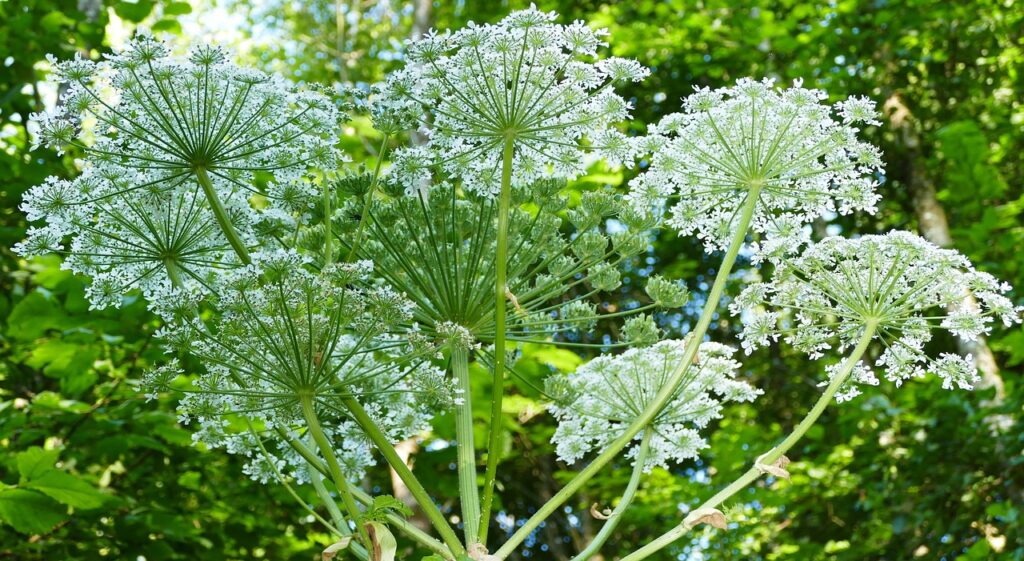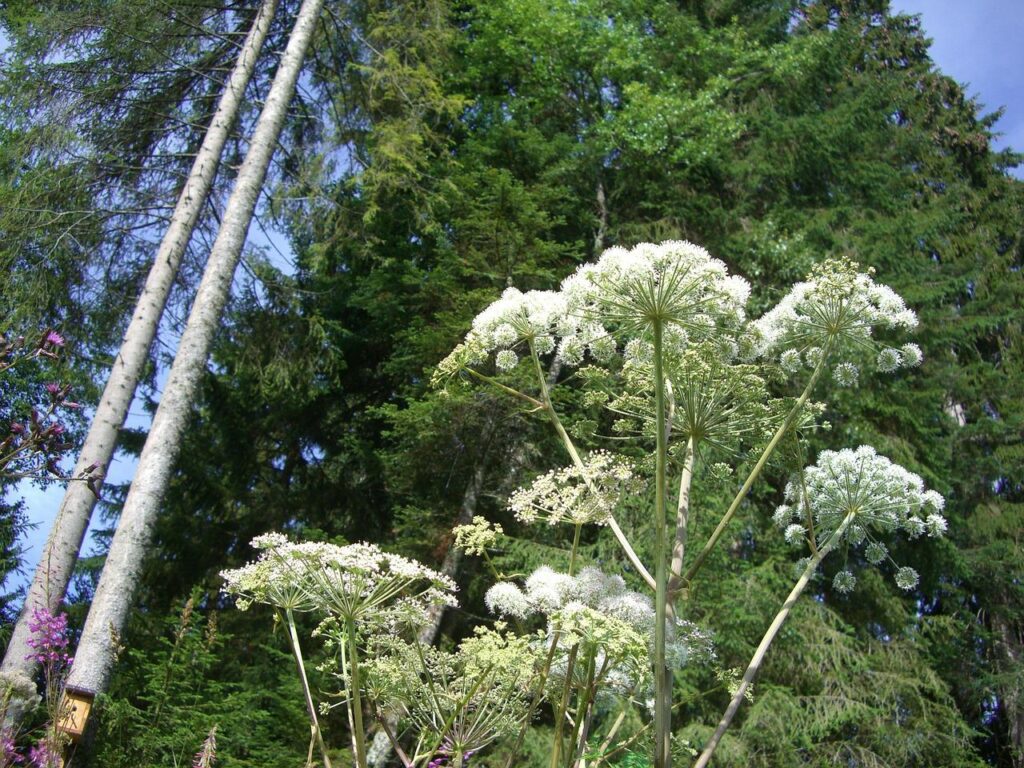This towering invasive plant that lives in Quebec is highly toxic and dangerous and should be reported to authorities for safe removal.

Some plants are like obnoxious people. They’re unfit for polite company and are best avoided. Giant hogweed (botanical name: Heracleum mantegazzianum) is one such plant.
Not so much “obnoxious” as “noxious,” giant hogweed, like some toxic people, may look pretty, but be warned. Its beauty is a dangerous lure to unsuspecting humans who may be tempted to touch it. The sap from this towering weed can cause serious burns, scarring and blindness.
Professor David Wees, who teaches Farm Management and Technology in McGill University’s Faculty of Agricultural and Environmental Sciences (Macdonald Campus), says that while giant hogweed is not common in the West Island, it is distributed throughout southern Quebec and eastern Ontario. Awareness of its appearance can help us to prevent nasty encounters with it.
“It originates in Eastern Europe, in the Caucasus, and it was introduced to Canada between 1910 and 1920 as an ornamental plant,” Prof. Wees says. “In fact, it was offered for sale in garden centres until the 1970s or ’80s. It was pulled off the market after Quebec nurseries were warned about it by their association.”
A member of the family of plants that includes carrots, parsley, celery and dill (Apiaceae), giant hogweed resembles a large version of Queen Anne’s lace with its umbel-shaped blooms. Its average height, says Prof. Wees, is about 13 feet, but it can exceed that in the right growing conditions. It was discovered in the wild in Quebec about 30 years ago.
“It grows well in wet soil,” he says. “It’s considered a short-lived perennial in the wild with a life span of between three and six years. Once it flowers, it dies. Before it blooms, though, people don’t recognize it as the toxic plant that it is. It’s the sap—called furanocoumarin—that is dangerous. When people try to cut the plant down, the sap splatters on their arms and legs. It makes skin highly photosensitive, creating the equivalent of serious sunburn. This reaction, called phytophotodermatitis, occurs if the skin is exposed to sunlight right after.”
The plant has evolved its toxicity to repel certain insects, he says.
While giant hogweed has been seen in the Montreal area (Angrignon Park in 2010) and there is anecdotal evidence that it’s been in Pierrefonds and Senneville, sightings are mercifully rare.
What should we do, however, if we see giant hogweed while we’re enjoying the great outdoors this spring and summer? “Don’t touch it,” warns Prof. Wees. “If you see it, alert the parks or horticultural division of your municipality about it. They’ll handle it.”
Experts—well protected by hazardous-materials suits—will dig up the plant and safely dispose of it.
The good news, if that’s possible in this scenario, is that the seeds of giant hogweed are too large to blow on a breeze. But because the plant thrives best in damp conditions, the danger is that seeds can fall into waterways and float downstream to propagate elsewhere, Prof. Wees says.
As we move into the growing season, it’s possible that West Islanders may see specimens of the noxious giant hogweed. In the event of exposure to its sap, it’s essential to get out of the sun, wash the skin thoroughly, and stay out of sunlight for 48 hours.
Mother Nature is beautiful, but like humanity, some of her children—giant hogweed among them—are toxic and nasty, and it’s best to give them a really wide berth.









